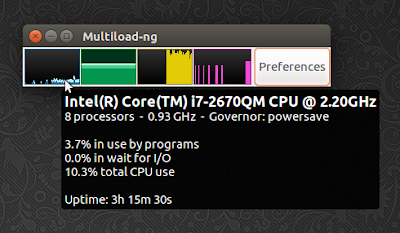

How to configure a static IP on Linux 15501 6.How to Install a Desktop and VNC on Ubuntu 16.04 15587 13.11 Ways to free up disk space on cPanel servers 16310 8.Install packages in Arch Linux from AUR 17280 15.Give it a try and feel welcome to give us your feedback. This ensures that the CPU doesn’t overheat and lead to the malfunction of your system. We have covered two applications that help users monitor temperature readings of the CPU cores. Unfortunately, Checking CPU temperature doesn’t work on virtualized instances such as a VPS or managed cloud server since the CPU and other hardware resources are virtualized. You can click on the thermometer symbol to keep tabs on the temperature readings of your CPU cores and hard drive. Next click on the “ launch session startup” option.Īnd this is what you get. To pin the application on the top bar, click on ‘ Psensor‘ and click on ‘ Startup‘. Therefore, the window below will be displayed: Once the installation is complete, you can use the application to search for the Psensor application and launch it.
Once you have installed lm_sensors install the Psensor application using the command: $ sudo apt install psensor So ensure that you have installed lm_sensors first. Psensor is a graphical tool that relies on the lm_sensors program to display temperature readings in a graphical format.

This will display the temperature of your CPU cores as shown below. When the configuration is done, check the CPU temperature by invoking the sensors command.
This will take a couple of minutes as the program continues probing your hardware components. Several other questions will follow upon which you will answer “Yes”. Do you want to scan for Super I/O sensors?” Just like the first question, choose “Yes” to allow Lm_Sensors to scan. We have to write to standard I/O ports to probe them. Type out “ Yes” in the prompt to begin.Īfter selecting “YES,” the second question states, “ Some Super I/O contain embedded sensors. Do you want to scan for them? This is totally safe”. You will be presented with the first question: “ Some south bridges, CPUs or memory controllers contain embedded sensors. The configuration process begins with a couple of questions. The program will begin to scan your processor and memory modules. To achieve this, run the sensors-detect command with sudo privileges if you are running as a regular user as shown to begin the configuration $ sudo sensors-detect $ sudo dnf install lm-sensors Configuration of Lm_SensorsĪfter the installation of the lm_sensors package, some configuration is required to ensure that the application can gather temperature readings from the CPU cores on your PC. Lm sensors program is installed on Ubuntu using the apt package manager as shown: $ sudo apt install lm-sensors hddtempįor Arch distros use the Pacman package manager to install as shown in the command below $ sudo pacman -S lm-sensors On CentOS / RHEL & Fedoraįor RedHat distributions such as CentOS & Fedora, use the dnf package manager to install the lm_Sensors tool. You can install the lm_sensors program on various Linux distributions as shown: On Ubuntu / Debian Incase Lm_Sensors command is not installed in your distribution, use the distributions package manager to install the Lm_Sensors package on your Linux PC. The lm_sensors tool is a command-line utility used to keep a watch on your CPU core and hard disk drive temperature. Let’s explore each of these tools: Method 1. There are two ways that you can use to check your CPU temperature: Using the lm_sensors tool or the Psensor graphical tool. How to check the CPU temperature on Ubuntu systems In this guide, we will explore various ways that you can employ to check the CPU temperature on Ubuntu. In addition, elevated temperatures can be due to blocked ventilation vents and sometimes running multiple applications with high power consumption. The same cannot be said of older systems whose cooling systems may not be as efficient. Modern PCs usually have a sound cooling system that keeps the temperature in check and prevents overheating. Overheating can be detrimental to your PC and If not kept in check, it can damage other motherboard components. Keeping your CPU temperature at an optimum level is crucial for the smooth running of your system.


 0 kommentar(er)
0 kommentar(er)
